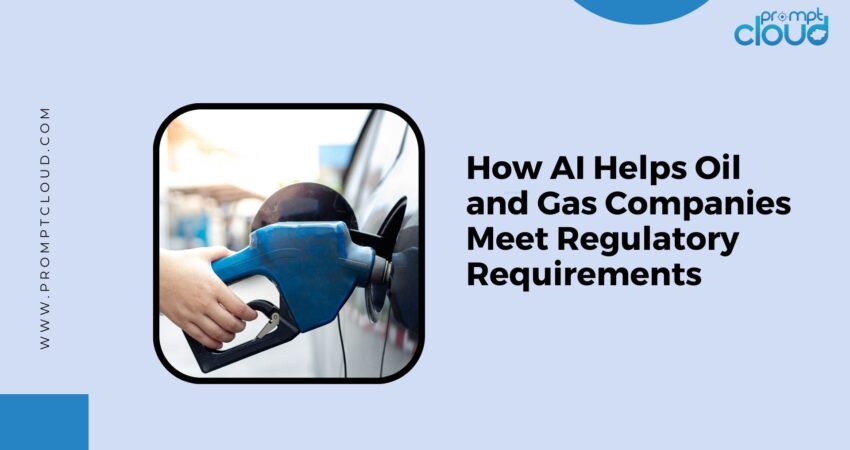
Oil and gas companies have become increasingly pressed to comply with environmental, social and governance (ESG) compliance. As regulatory requirements keep increasing and public pressure continues to grow for companies to do business in a sustainable way, this industry looks for innovative ways to enhance their ESG performance. That’s where artificial intelligence (AI) comes in.
Large datasets fuelled by AI tools can help oil and gas firms quickly collect, analyze, and act on ESG data. Predictive analytics gives us a headstart in predicting risks and opportunities to inform better, proactive decision-making, whereas machine learning identifies patterns and insights that can improve regulatory reporting outcomes. But eventually leveraging AI and data analytics can help build ESG compliance and foster competitive advantages. In addition to AI-driven insights, Utility Bidder can help oil and gas firms secure the best energy deals, ensuring cost efficiency while supporting their ESG commitments.
The ESG Compliance Challenge for Oil and Gas
Oil and gas are considered high-impact industries when it comes to ESG risks. Extracting and distributing fossil fuels affects vast swaths of land, water, wildlife, and communities. Environmental incidents, unsafe working conditions, and unethical business practices also garner immense public backlash.
As societal expectations for corporate responsibility rise along with the intensifying impacts of climate change, oil and gas firms face mounting regulatory obligations. To address these challenges effectively, innovative solutions like CleanConnect.ai are emerging, offering advanced tools to help companies streamline ESG compliance and mitigate environmental risks. Major ESG compliance issues include:
Strict Reporting Requirements
Mandatory ESG reporting and tighter disclosure standards are expanding worldwide. For example, the EU’s Corporate Sustainability Reporting Directive will require listed energy firms to report core climate and broader ESG data digitally starting in 2024. Compiling complex sustainability reports manually can be resource-intensive.
Emissions and Net Zero Regulations
Under the Paris Agreement, over 140 countries have committed to net zero emissions targets. To advance climate action, governments are introducing stricter policies for tracking and reducing greenhouse gas emissions, which oil and gas companies must adhere to.
Health and Safety Rules
Oil and gas workers are protected and trained, and their rights are protected by rigorous regulations. As well, operational pollution must be prevented from creating environmental health hazards by firms. Keeping drilling sites and equipment compliant with changing safety codes requires regular monitoring.
Responsible Resource Development
Oil and gas corporations must respect environments, communities and human rights in their project areas, according to principles of ethical resource management, such as the UN Global Compact. It, therefore, requires both comprehensive impact assessments and stakeholder engagement.
Non-Compliance Ramifications
If oil and gas companies do not comply with regulations, they face large fines, damage to their reputation and even loss of their legal or social license to operate. However, despite their heavy responsibilities, most firms still depend on manual data processing, which makes it difficult to meet ESG compliance on a large scale.
This is why more leading oil and gas corporations have begun leveraging artificial intelligence as a solution.
How AI Enables Data-Driven ESG Compliance
ESG regulations essentially mandate that oil and gas firms monitor, document, analyze, and act upon copious amounts of sustainability data. Manual approaches often generate scattered datasets rife with inconsistencies and reporting errors. AI-powered analytics structurally transform how companies can collect, interpret, and apply ESG data for strategic decision-making.
Core benefits AI brings for accelerating oil and gas ESG compliance include:
Centralized Data Management
AI collates sustainability data from myriad sources across operations into unified, high-quality databases. Centralizing disparate records on a shared data architecture makes analysis more holistic.
Automated Data Collection
With AI, time-consuming, incomplete manual reporting becomes obsolete. Sensors and drones embedded at oil and gas sites can continuously feed ESG performance data to machine learning algorithms for dynamic tracking.
Advanced Insights
So it goes beyond basic analytics, and it means using natural language processing, but also image recognition and predictive modeling and more, to find patterns in complex data. It reveals deep operational insights that improves reporting accuracy and strategy.
Risk and Opportunity Identification
By training algorithms on industry data, oil and gas firms can be warned of emerging ESG problems like equipment defects and geopolitical shifts. Additionally, AI tells companies where to invest — specifically, in renewable energy assets.
Rapid Scenario Testing
It is AI that runs endless simulations of different business scenarios and risk factors. It enables oil and gas leaders to stress test decisions such as capital projects or crisis response plans for best ESG outcomes.
Integrated AI capabilities enable sustainability data to become a strategic asset and not a compliance burden to the oil and gas sector.
AI Use Cases for ESG Performance Management
Myriad AI applications are emerging reinforce to ESG performance within the oil and gas industry:
Environmental Compliance:
- GHG Monitoring. Real-time carbon accounting is generated by correlating production data with continuous emissions measurements using AI.
- Leakage Detection. Machine learning monitored infrared drones and sensors quickly detect even the slightest of methane leaks for mitigation.
- Biodiversity Protection. Satellite imagery is analyzed by algorithms to generate wildlife habitat maps and to detect changes in vegetation for the purpose of guiding conservation plans.
- Water Management. Water usage is optimized by smart meters and pumps, and AI predicts availability risks from climate change projections.
Social Responsibility:
- Health & Safety. Worker fatigue levels and safety behaviors are tracked by wearables that help prevent incidents and diseases before they happen.
- Human Rights Audits. Public news, reports, and complaints are scanned rapidly by natural language processing to identify emerging controversies around labor practices or Indigenous relations.
- Community Engagement. Social media conversations and survey responses are interpreted by sentiment analysis to watch stakeholder attitudes and concerns.
- Inclusion Tracking. Anonymously, computer vision monitorsthe diversity statistics of operational sites by analyzing images and video.
Governance Accountability:
- Regulatory Monitoring. Every day, AI scans legal documents from around the world to spot new emerging ESG policies that companies can proactively comply with.
- Audit Preparedness. Sustainability reports are auto populated with current performance indicators ready for auditing using algorithms.
- Supply Chain Oversight. Smart contracts on blockchain trace responsible sourcing while machine learning screens third-party risks.
- Anti-Corruption. Transaction monitoring systems ensure ethical business standards by dealing with fraud, bribery and money laundering.
The AI Difference: Turning ESG Compliance into an Opportunity
Adopting artificial intelligence to manage ESG performance allows oil and gas enterprises to achieve compliance efficiently while unlocking deeper organizational value. The benefits stem from how AI-powered analytics can:
Save Resources
Automating data collection and reporting saves oil and gas companies time and labor, which they can reallocate to innovation and strategy. McKinsey estimates that AI could cut the time spent on sustainability reporting by up to 80%.
Prevent Incidents
With algorithms constantly monitoring assets and risk factors, oil and gas firms can predict and preempt major ESG incidents, such as spills or accidents, to avoid disruptions. Each disaster averted conserves shareholder value.
Enhance Agility
Data-driven insights on emerging risks, market shifts, and stakeholder opinions keep leadership well-informed and able to adapt quickly. This builds organizational resilience amidst energy transition.
Unlock Value
Granular visibility into emissions, safety hazards, local contexts, and more allows oil and gas companies to pinpoint the most impactful ESG initiatives in which to invest. Data transparency also builds investor and community trust.
In essence, AI transforms ESG compliance from a box-ticking exercise into an opportunity to future-proof operations.
Implementation Guide: Deploying AI-Based ESG Solutions
What steps are involved for oil and gas enterprises ready to leverage AI’s potential? Successful adoption requires focus across three key dimensions:
Strategic Alignment
Identify ESG focus areas, objectives and metrics, get executive buy-in, and integrate sustainability targets into corporate strategy with AI as an enabler. Put digital and sustainability leaders in charge of AI adoption.
Technology Readiness
Assess existing data infrastructure, find the gaps and invest in centralizing more datasets on cloud computing. Accuracy, ethics and cybersecurity audit algorithms, and training data. Training upskilling teams on AI through e-learning modules and hackathons.
Change Management
But also encourage bottom-up ideas on how to apply AI and reassure any displaced workers. Build AI tools to support end-user needs in agile, cross-functional squads. Promote AI goodness across the organization and keep cultural adoption in mind. Keep measuring along the way.
Oil and gas firms are able to receive essential strategic guidance, technological capabilities and industry expertise from specialized AI partners. These companies are able to immediately implement data-driven ESG performance management based on the right collaborations.
The Future of AI for ESG and Net Zero Goals
As artificial intelligence alleviates current ESG compliance burdens for the oil and gas sector, it also offers transformational potential moving forward. The same data insights that optimize environmental, social and governance processes can guide the evolution of the business model.
AI empowers oil and gas leaders to develop innovative decarbonization strategies by providing clear visibility into cost structures, operational risks, consumer shifts and climate impacts. Analytics further enables targeted investments in emerging opportunities, from carbon capture to clean hydrogen production.
This makes AI pivotal for navigating the energy transition. As more nations work towards net zero emissions – with over 70% of global GDP covered under these commitments – AI will allow oil and gas companies to align operations with climate goals through data-driven roadmaps gradually.
Thus, proactive players can use AI to turn ambitious decarbonization targets into profitable new value streams. Becoming sustainability leaders will further attract eager talent and investment. Forward-looking firms understand that AI is key to managing the present and future-proofing for long-term resilience.
Conclusion
Artificial intelligence is game-changing in the oil and gas industry as it moves into a cleaner future. These companies are empowered by AI to meet intensifying ESG obligations faster and extract powerful insights from sustainability data.
Even in the midst of the energy transition, machine learning and predictive analytics help develop data-driven strategies for responsible and profitable operations. This means that early movers who utilize AI can turn regulatory requirements into competitive differentiators.


















